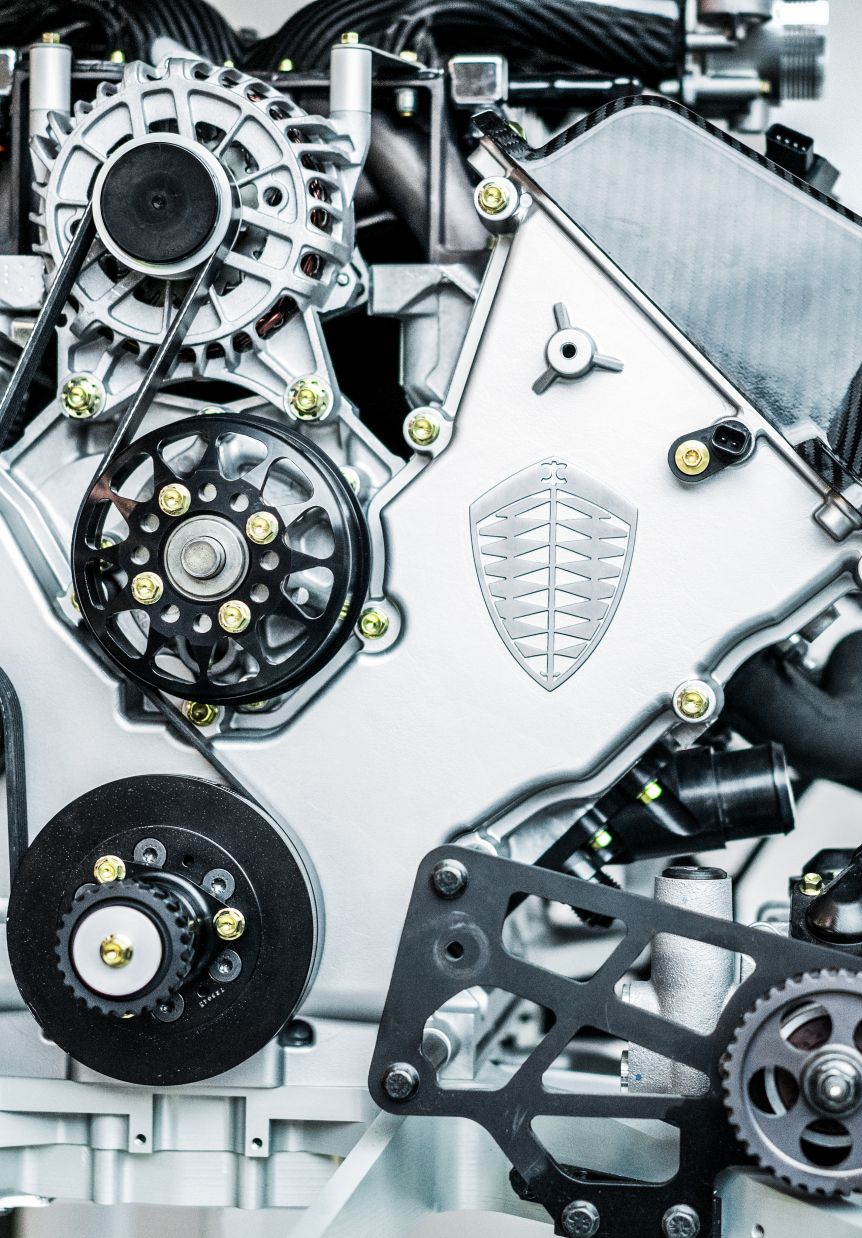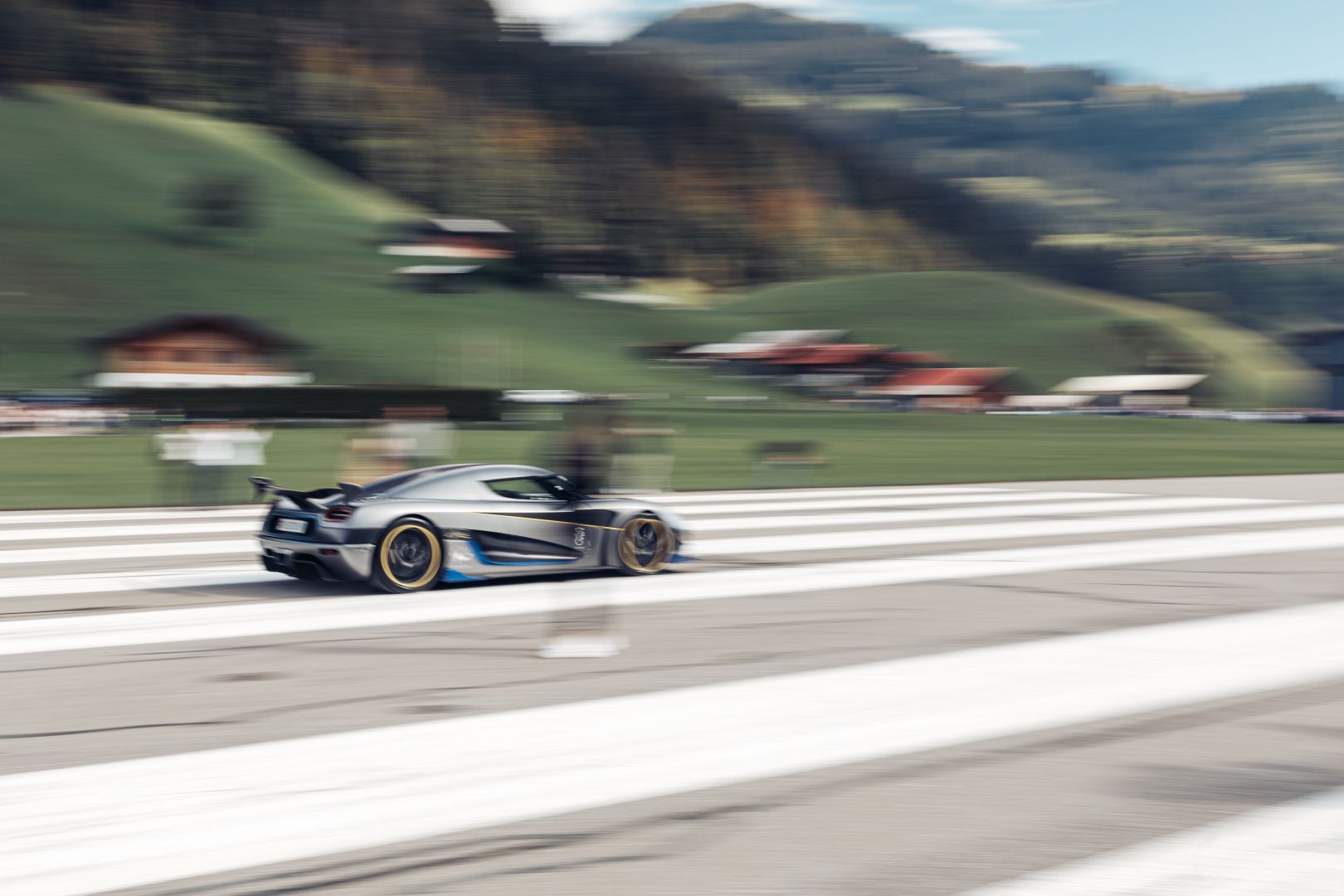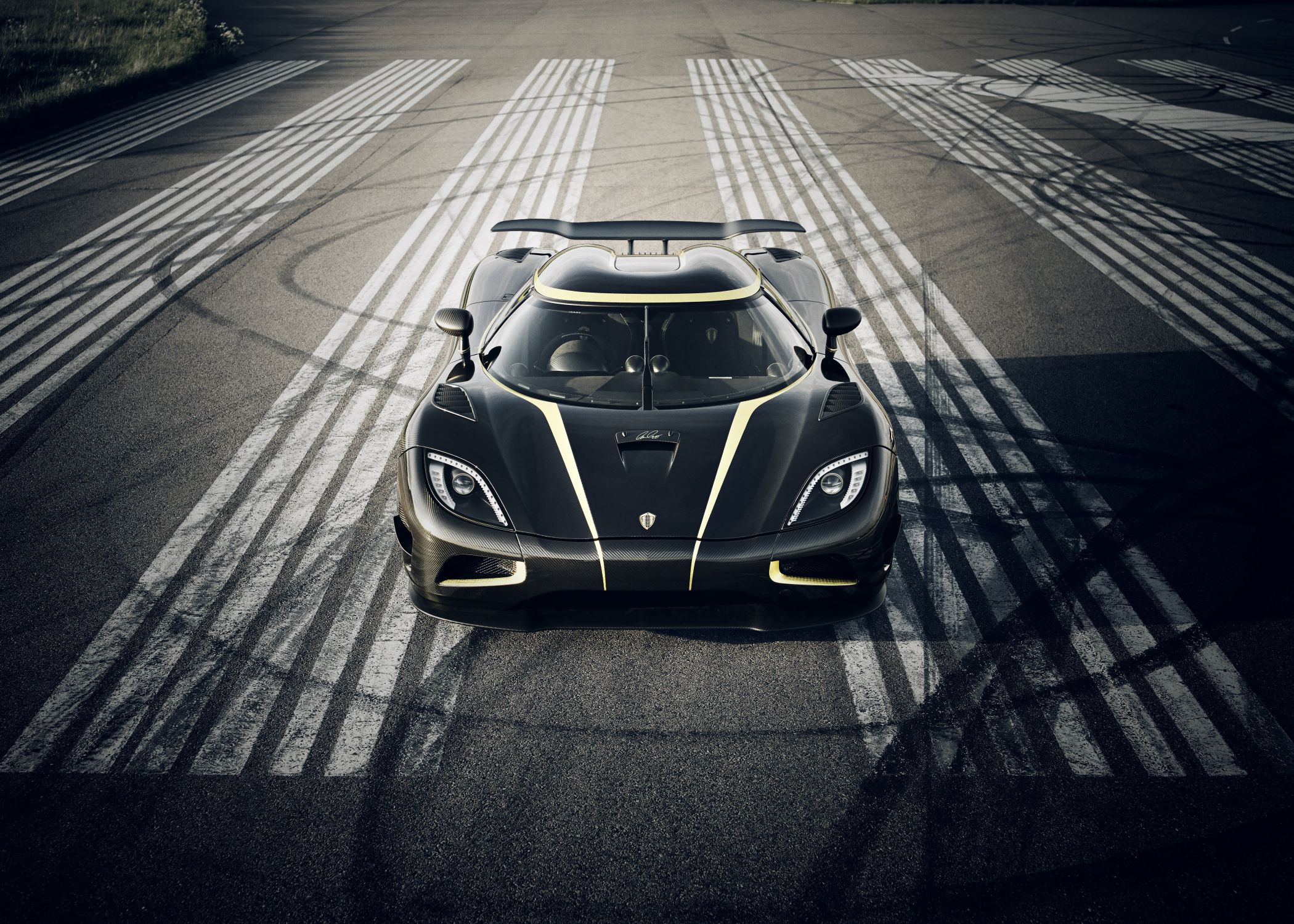
Overview
Agera means “to take action” in Swedish, and is also an abbreviation of Ageratos, ancient Greek for “ageless” – both suitable descriptors for this incredible and beautiful machine. The Agera features a unique 7-speed transmission with an E-diff and wet clutch functionality developed in-house at Koenigsegg, resulting in a system that truly enhances performance and handling. It's also fitted with a new interior, featuring the now-famous ‘ghost’ lighting system characterized by interior symbols created with laser-etched, virtually invisible nano-holes punctured through the aluminum panels and buttons.

30 examples in total, spanning across
the Agera, Agera R and Agera S
Progressive
Leveling
Up




The Agera was the first model to feature the Koenigsegg developed Vortex Generating Rims (VGR). They acted as air turbines to draw air in to improve brake cooling, and assisted with increasing the downforce of the car significantly. Given that the offset and width are different from front to rear, all four wheels are individually designed so that turbine blades always face the correct direction for extraction. The VGR wheels are forged and then machined to their final shape (excess material is removed during this process) thus minimizing weight whilst featuring outstanding stiffness.
Turbo technology had come a long way since the CCX and CCXR, with the downside of turbo lag disappearing if engineered properly. However, turbo engines with emission control had catalytic converters that caused a lot of back pressure at high power levels. This was elevated through the turbo and into the exhaust ports of the engine, causing hot EGR - a source for detonation knocking. To solve this, Koenigsegg placed the pre-cat behind the wastegate instead of the turbo, reducing back pressure by a factor of 3. This solution gave an extra 300 hp – a worthy successor of the Rocket cat invented by Christian 10 years prior. This meant that the Agera could competitively deliver torque, power and response to match larger engines at a fraction of their weight.
The Agera's 7-speed automatic gearbox was developed together with CIMA. Its primary shifting function is that of a single clutch but it has a secondary, smaller wet clutch. The benefit of this is that it acts as a single clutch box but has shift speeds of a twin-clutch box. The result is that this system is smaller, more compact and lighter than a twin-clutch box.
AGERA
SPECIFICATIONS
960 BHP Output
1100 Nm Torque
7500 rpm Redline
3.0 Sec 0-100 km/h
1435 kg Curb weight
The Top Gear
2010 Hypercar
of the year
An all-new platform that paved the way for blistering performance.
-
![Agera R]() Agera R
Agera R-
Reclaimed In-house
-
Koenigsegg's own ceramic piston brake system
-
Visually enhanced
-
New visible carbon accents, front side winglets & aero exhaust
-
More powerful
-
Increased engine power with a raised RPM limit.
The Agera R built upon the features and functionality of the Agera with new, unique solutions to enhance both performance and visual appearance even further. Enhancements included new front side winglets, an all-new Aero exhaust, increased engine power with a raised RPM limit, alongside the ability to run on biofuel.
-
-
![Agera S Hundra]() Agera S
Agera S-
Catch up with the R
-
Available in more markets without E85
-
Still powerful
-
1030 hp on 98 octane RON or 93 octane DI
-
Still darn fast
-
Top speed of over 400 km/h
-
Innovative first
-
AirCore hollow carbon fiber rims
The Agera S conquers more markets where E85 fuel was unavailable (rendering the flex-fuel function of Agera R ineffective). Despite not running on high-octane biofuel, Koenigsegg still managed to extract 1100 Nm of torque and 1030 hp from the 5-liter bi-turbo V8 when running on 98 octane RON or 93 octane DIN.
-

Breathtaking
A nose-to-tail exploration of the Agera's next-level form and function by renowned Youtuber Mr. JWW on the monumental Agera.







